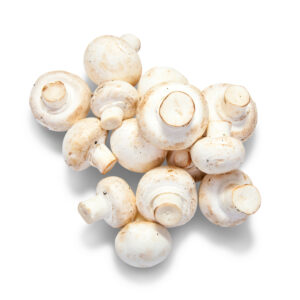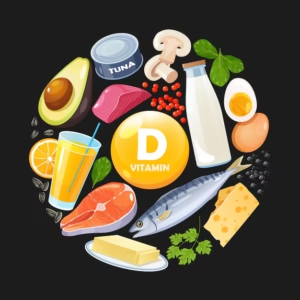Mushroom: The Nutrient-Packed Hero of Every Plate
Mushrooms are quite unique — they are neither fully vegetables nor fruits. They are a type of fungus, yet due to their nutritional value and flavor, they hold a special place in kitchens around the world. Today, as more people shift towards healthy and plant-based diets, mushrooms have become more essential than ever. Let’s explore what makes mushrooms a true nutrition powerhouse.
What Makes Mushrooms Special?

The Nutritional Science of Bananas
Mushrooms are rich in essential nutrients that are incredibly beneficial to health. They are low in calories, fat-free, cholesterol-free, and naturally low in sodium. The nutritional value varies with the type, but almost all edible mushrooms contain important nutrients required by the human body.
Key Nutrients Found in Mushrooms
1. Macronutrients
Mushrooms are made up of 85% to 95% water, making them light and very low in calories. 100 grams of fresh mushrooms contain only about 22 calories.
-
Fat: Contain very little fat (about 0.3 to 0.5 grams per 100 grams), mostly healthy unsaturated fats like linoleic and oleic acid.
-
Carbohydrates and Fiber: Contain dietary fibers like beta-glucans, chitin, and pectin that improve digestion and gut health.
-
Protein: Though lower in protein than meat, they offer more protein than most vegetables — around 2–4 grams per 100 grams. Notably, they contain all essential amino acids, making them a valuable option for vegetarians.
Vitamins and Minerals in Mushrooms
1. B Vitamins:

Mushrooms are a good source of B2 (riboflavin), B3 (niacin), B5 (pantothenic acid), B1 (thiamine), and folates. These support energy production, nerve function, and healthy skin.
2. Vitamin D:

Mushrooms are a rare vegetarian source of Vitamin D2, which they produce when exposed to sunlight or UV light. Sun-dried mushrooms can be an excellent vitamin D source for plant-based eaters.
3. Minerals:
They contain potassium, copper, zinc, phosphorus, selenium, magnesium, and iron. For example, 100 grams of portobello mushrooms offer potassium equivalent to that in a banana.
Antioxidants and Bioactive Compounds
Mushrooms are packed with antioxidants that help the body fight disease:
-
Selenium: Essential for cell repair and immune support.
-
Ergothioneine and Glutathione: Neutralize free radicals and may help reduce aging and cancer risk.
-
Beta-glucans: A special fiber that helps lower cholesterol, improve heart health, and regulate blood sugar.
Health Benefits
1. Heart Health:
Low sodium and high potassium levels help regulate blood pressure. Their fiber and antioxidants reduce inflammation and protect against heart disease.
2. Immune Support:

Selenium, vitamin D, and beta-glucans strengthen immunity and help fight illness.
3. Weight Management:

Low calorie and high-fiber content make mushrooms filling. Their umami flavor makes meals more satisfying, helping control overall food intake.
4. Cancer Prevention:
Studies suggest eating 1–2 cups of mushrooms per week may reduce the risk of certain cancers by up to 45%. Shiitake and reishi mushrooms contain compounds that may inhibit tumor growth.
5. Brain Health:

B vitamins and antioxidants in mushrooms protect brain cells from damage. Research indicates that regular consumption may reduce the risk of Alzheimer’s and cognitive decline.
How to Protect Your Brain from Damage Through Diet
Ideal for Specialized Diets
-
For Vegetarians and Vegans: Ideal meat alternative due to its protein content, vitamin D, texture, and taste.
-
For People with Allergies: Safe for gluten-free, dairy-free, and nut-free diets.
-
For Seniors: Vitamin D and antioxidants support bone health, brain function, and immune defense.
How to Maximize Mushroom Benefits
-
Embrace Variety: Use different types like shiitake, portobello, cremini, oyster, and enoki to enhance your meals.
-
Proper Cooking: Light sautéing, grilling, or roasting helps preserve nutrients. Avoid over-boiling to prevent loss of water-soluble vitamins.
-
Sun Exposure: Leave fresh mushrooms in sunlight for 15–30 minutes to enrich their vitamin D content.
Common Myths and Precautions
-
Not all mushrooms are edible. Never eat wild mushrooms without expert identification, as some can be poisonous.
-
Raw mushrooms can be hard to digest due to chitin. Cooking them reduces digestive discomfort.
How to Incorporate Mushrooms into Meals
-
Add them to soups, curries, stir-fries, and stews.
-
Use portobello mushrooms as burger patties.
-
Include them in pasta, omelets, noodles, sandwiches, and rice dishes.
-
Chop finely and add to mince, patties, or sauces to boost flavor and nutrition.
Conclusion: Why Add Mushrooms to Your Plate?
Mushrooms are a perfect blend of taste and health. Whether you’re aiming to improve heart health, lose weight, boost immunity, or simply add diversity to your meals, mushrooms are a nutritious and delicious choice.
They’re affordable, available year-round, and easy to use in countless recipes. So next time you’re grocery shopping, be sure to add mushrooms to your list — your body and your taste buds will thank you!
